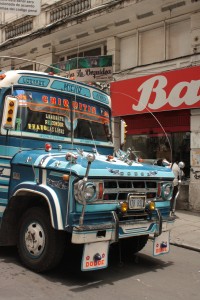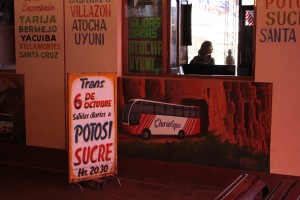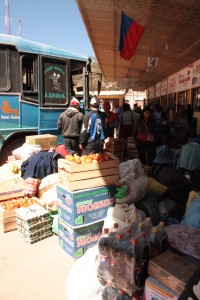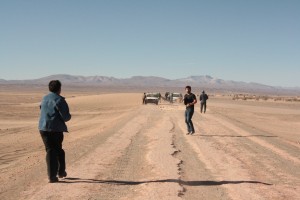
I’m not a man designed for transport really, be that public or otherwise. My limbs are longer than they should be, my posture is terrible, and I have trouble sleeping in anything other than a bed. So it’s no surprise that my least favorite bit of traveling is that spent in actual transit. And as most know, an unhealthy amount of most traveling is exactly that: mastering the art of sitting still for hours at a time, not getting carsick while reading, and learning every single type of single player card game there is.
My first experience of Bolivian transport followed a surprisingly exceptional period of travel through Argentina – in part due to an entirely unwarranted belief that I was to be riding around in a roofless shell of a bus for the duration, but largely down to the fact that buses in Argentina (and in much, yet definitely not all, of South America), are incredibly luxurious – decadent even. So you can understand my misplaced confidence in all things on four wheels when I marched (not in the military sense, in the sense that my legs are far too long for my body and so my uncoordinated walking is only functional when done very precisely) into the bus station in Tupiza, southern Bolivia.

Across the station were several bus stalls, all occupied with a young female attendant, all screaming for my custom. The stalls were decorated with hand painted representations of the buses on offer, and to my weary eyes, all looked much like the ones I had been traveling on in the previous months. Of course, in retrospect it’s clear to me now why these were paintings and not photos, but alas, after a few minutes of my awkward Spanish and fumbling fingers, I bought a ticket for the following morning to Uyuni, launch pad to the Salar de Uyuni – the largest salt flat in the world.
Despite my early insistence in condemning all transport, in Bolivia it’s incredibly cheap. Indeed, traveling there with a strong currency, there is little that isn’t; but as a proportionate cost, travel is very affordable. The government subsidizes petrol, and so the cost of fueling a car is minimal. Similarly, there are no mandatory road test certificates needed to get your car, and so once you’ve bought one the bulk of the expense is gone. It’s a great system; except that it’s not entirely, as I found out on my morning of travel.

The bus, unlike its representation adorning the stall from where I had bought my ticket, had not been painted recently. Judging from its appearance, the only thing that it had done recently was drive repeatedly through a brick wall. The result of unregulated vehicle safety and cheap petrol is exactly what lay before me – stranded in a sea of people (far too many than could ever fit into such a tiny vehicle), and covered in bags: falling out of the bus’s sides, strapped to the roof, I considered just leaving mine on the floor, such was my confidence in the vehicle’s retention properties. Upon boarding, my confidence did nothing but dip, finding my seat broken to the point of rendering me horizontal into the increasingly annoyed man sat directly behind me. Luckily there was a very happy woman sat beside me who felt my troubles amusing, lightening the man’s mood, and my own slightly. When I say “next to”, however, I mean she sat in the aisle, on a bag of corn, with her restless, incontinent puppy. My journey time? Only eight hours.

After a hell raising trip through the Andes, which proved incredibly picturesque, yet pants-wettingly terrifying due to the sheer cliffs the roads – unpaved and bumpy – have for some reason been built along, I found myself on sturdy ground, at the end of one journey, but unfortunately at the beginning of many more. In my later endeavors in the country I found myself stranded in the middle of nowhere on another intercity bus following it running out of petrol – luckily the bus driver sent one of the lucky passengers out to hitchhike to the nearest petrol station so that she could fill up several coke bottles for the bus – as well as trying desperately to get used to the fact that Bolivian drivers don’t drive on the left, or right, or middle, choosing rather to cover as much of the road as they possibly can, at all given moments. Yet while I am often inclined to spend most of my time complaining, these complaints are largely indicative of the sort of person that I am; a western, white boy traveler with pale skin and red hair, and so it’s easy to look at the negatives. Inversely, if I look back to when I was in these uncomfortable situations it’s good to remember that I, or myself and my companions, were often the only outside travelers on these buses. And so it could be seen as a positive that Bolivia, despite being the poorest country in South America, has a thriving, and busy public transport system. Just not for those scared of heights, allergic to animals, suffering from claustrophobia, with an aversion to lethargic drivers, or planning on getting somewhere fast.


